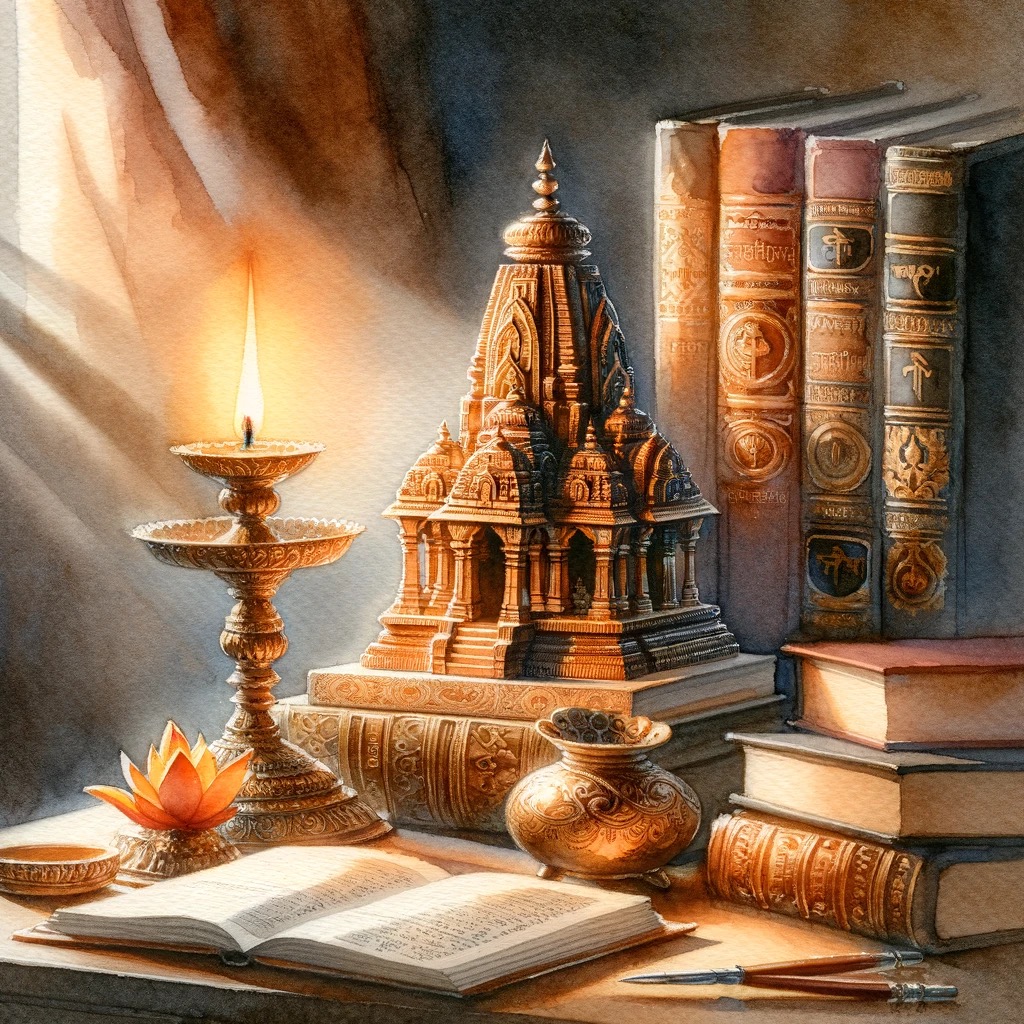Introduction to Kāvyaśāstras
The juice of life or rasa, pervades every aspect of a rasika’s life. And kāvya is an expression of that rasa in its highest form. Bhārata has had a long, rich and structured tradition of kāvya, many of which are unfortunately not known as widely as they should be. This course will shed light on the various schools of kāvyaśāstras, and engage the learner in a delightful journey of soundaryabodha.
Overview
यदि शब्दाह्वयं ज्योतिरासंसारान्न दीप्यते ॥
Alaṅkāra sampradāya: Bharatamuni describes only 4 alaṅkāras that enhance the beauty of kāvya. Bhāmaha titled his own work as Kāvyālaṅkāra, thus propounding the view of his own school. It is interesting to note that with the passage of time, the number of alaṅkāras even crossed hundred. According to this school, the essence of poetry is not rasa but alaṅkāra. In the words of Bhāmaha, even the lovely face of a lady does not give joy in the absence of ornaments (न कान्तमपि निर्भूषं विभाति वनितामुखम्). Then, what to say about kāvya without alaṅkāras? Daṇḍin and Jayadeva are other famous ācāryas of this school.
यथास्मै रोचते विश्वं तयेदं परिवर्त्तते ।।
Contents
Module 1
Introduction to the uninterrupted tradition of Indian poetics (Kāvyaśāstra)
Module 2
Introduction to the Rasa school and Nāṭyaśāstra
Module 3
Alaṅkāra sampradāya
Module 4
Rīti and Guṇa sampradāya
Module 5
Vakrokti sampradāya
Module 6
Aucitya sampradāya
Module 7
Dhvani sampradāya
Session Recordings

Module 1
Introduction to the uninterrupted tradition of Indian poetics (Kāvyaśāstra)

Module 2
Introduction to the Rasa school and Nāṭyaśāstra

Module 3
Alaṅkāra sampradāya

Module 4
Rīti and Guṇa sampradāya

Module 5
Vakrokti sampradāya

Module 6
Aucitya sampradāya

Module 7
Dhvani sampradāya
Sign up to view session recordings
These recordings are part of our member-only exclusive access.
Upgrade to get full access to all course recordings and other membership benefits
Key Takeaways
Definition
Ability to define kāvya and explain its salient features.
Knowledge
Knowledge of various schools (sampradāyas) of literary criticism.
Learning
Learn to apply the theories to enjoy literature.
Pride
Take pride in the perennial tradition of kāvyaśāstra in Bhārata.
Contrast
Compare and contrast Bhāratīya poetics with the Greek poetics.
Who is this course for?
- Poetry weaves beauty into life. The course is intended for everyone who wants to better understand the fundamentals of kāvya and rasa, and be able to enjoy the vast richness of Kāvyaśāstras. Anyone interested in knowing the theories of literary criticism, especially students of languages and literature, are also recommended to join. The theories hold good for all regional languages of India along with Saṃskrita.
Know your Instructor

Dr. Gauri Mahulikar
Dr. Gauri Mahulikar is the academic director at Chinmaya International Foundation and former dean at Chinmaya Vishwa Vidyapeeth. A luminary of Saṃskrita studies, she is a recipient of the Adi Shankar Fellowship by the Acharya Shakar Samskritik Ekta Nyas, Ministry of Culture, Madhya Pradesh. A recipient of numerous awards, she has a rich academic background and has published over 90 articles in English, Saṁskrita, Marathi and Hindi. She also holds the Maneckji Limji Gold Medal for her dissertation on ‘Ancient Greek Dramas and Bharata’s Naṭyaśāstra’ from Mumbai University. She has mentored over eighteen Ph.D. scholars, initiated transformative courses, and led a UGC-funded project on manuscript preservation.
Our Draṣṭā online courses are designed to help you in your learning journey
Become a part of the community and engage, share, discuss and deepen your learnings
Interact with the course instructor through live sessions
Access to session recordings and materials


Become a member and dive into the Indic universe
Brhat subscription gives access to exclusive member-only content rooted in the Dharmic worldview.
Starts at ₹500 per month.